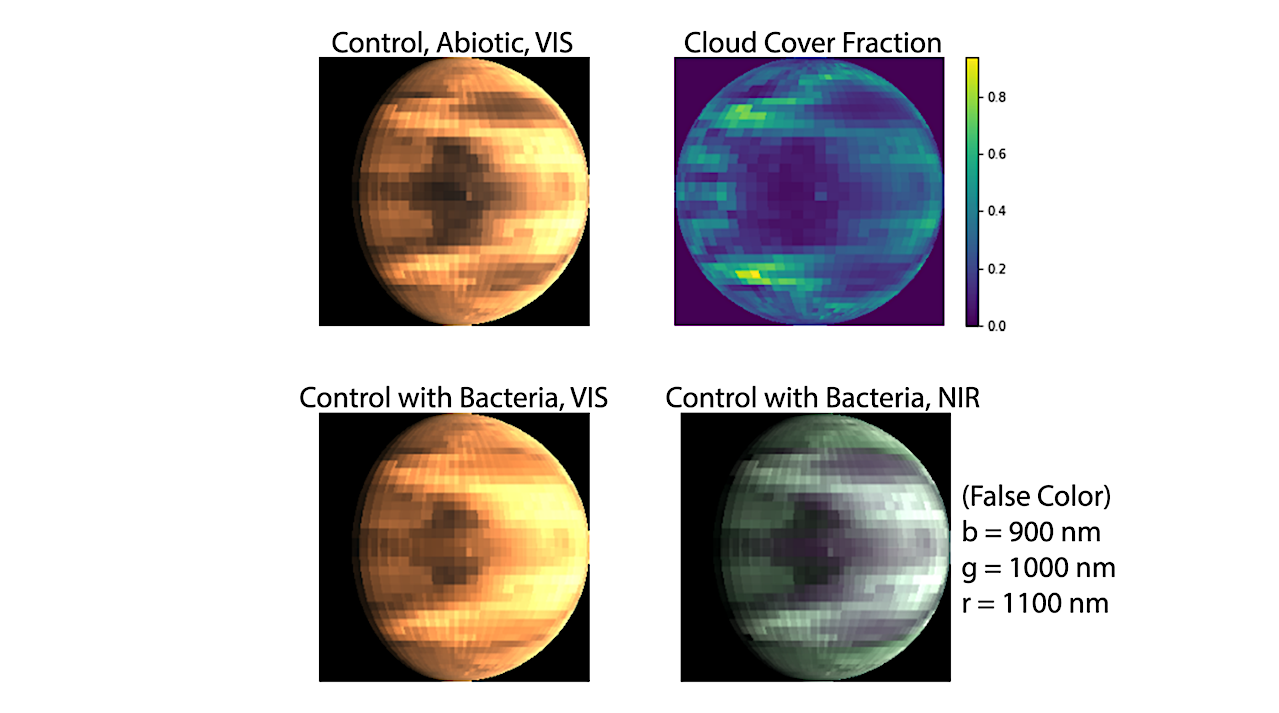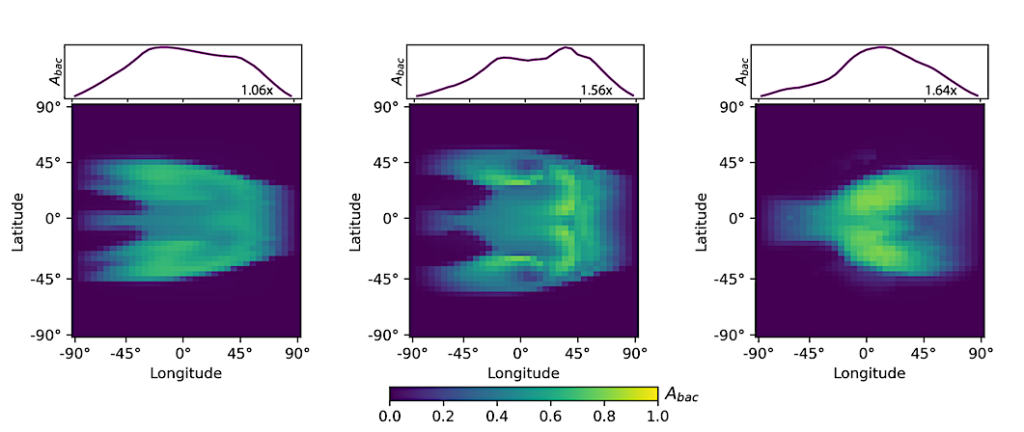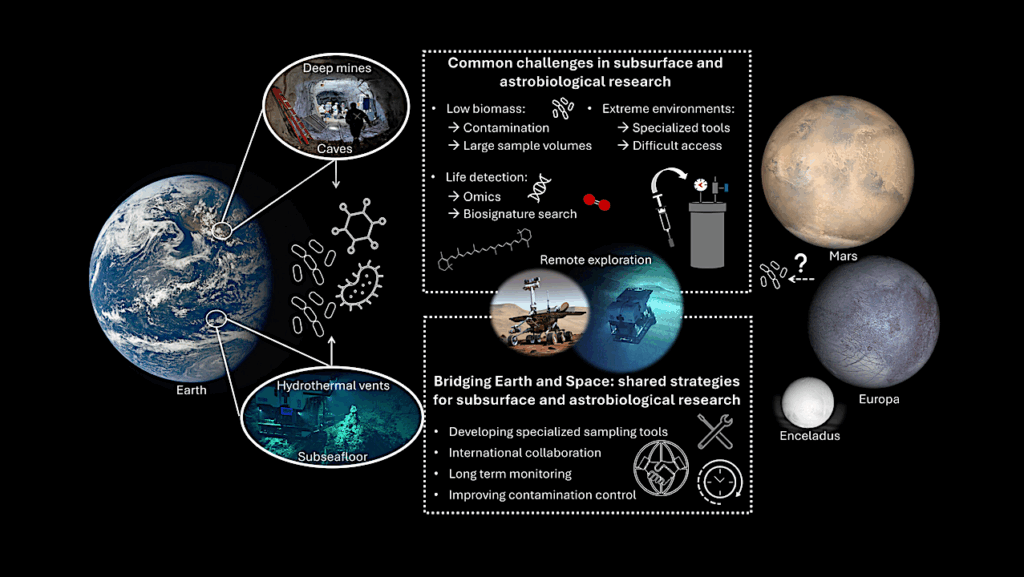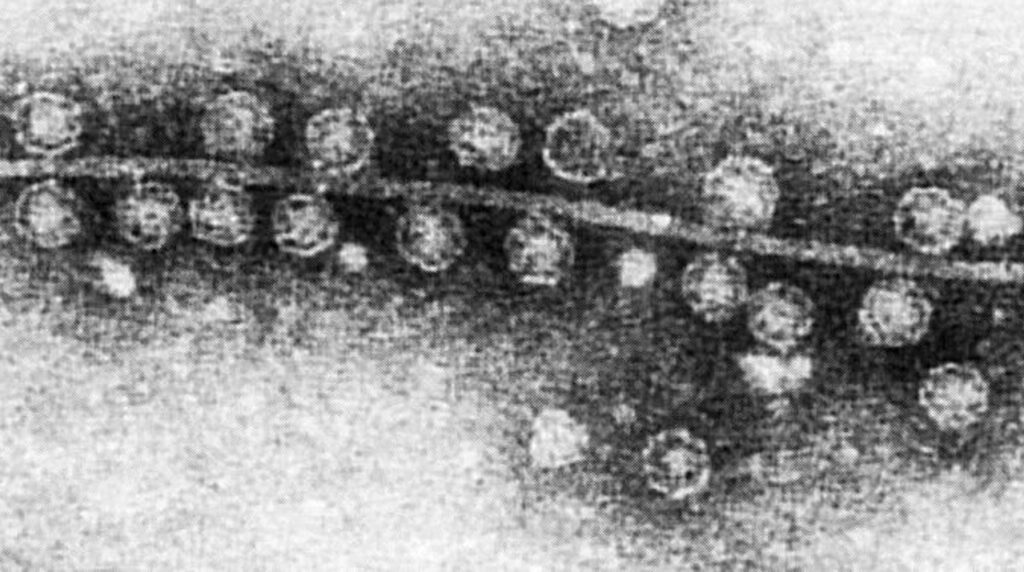Detectability Simulations of a NIR Surface Biosignature on Proxima Centauri b with Future Space Observatories

Telescope missions are currently being designed which will make direct imaging of habitable exoplanets possible in the near future, and studies are needed to quantify the detectability of biosignature features in the planet’s reflectance spectrum.
We simulated the detectability of a NIR-absorbing surface biosignature feature with simulated observations of the nearby exoplanet Proxima Centauri b. We modeled a biosignature spectral feature with a reflectance spectrum based on an anoxygenic photosynthetic bacterial species that has strong absorption at 1 um, which could make it well suited for life on an M-dwarf hosted planet.
We modeled the distribution of this organism across the planet’s surface based on climate states from a 3D General Circulation Model (GCM), which were Archean and Proterozoic-like exo-Earth analogues. We included the GCM runs’ prognostically simulated water clouds and added organic haze into the Archean-like atmospheres.
We simulated observations of these Proxima Centauri b scenarios with the LUVOIR-A and B telescope concepts, with LUVOIR-B serving as a proxy to the planned Habitable Worlds Observatory (HWO).
We calculated integration times necessary to detect the biosignature, and found that it would be detectable on Proxima Centauri b if the organism is moderately abundant (greater than a 1-4% global surface area coverage), as long as the atmosphere is transmitting in the wavelength range under consideration.
Small amounts of methane, clouds, and haze do not greatly impede detectability. We found preliminary evidence that such a biosignature would be detectable on exoplanets within 15 pc, but further investigations are needed to corroborate this.

B. viridis-like organism (BVLO) abundance maps on the dayside of DG19 Proxima b states (Abac as a function of latitude and longitude), shown for Amax = 1. Plotted above the maps is the surface area coverage fraction in each longitude band. The numbers at bottom right of these top panel plots are multipliers indicating the total hemispherical east:west BVLO abundance ratio. When observing this planet at a phase of 270° (for an inclination of 90°), only the eastern half of the dayside is visible, and only the western for a phase of 90°. — astro-ph.EP
Connor O. Metz, Nancy Y. Kiang, Geronimo L. Villanueva, Mary N. Parenteau, Vincent Kofman
Comments: 31 pages, 9 figures, 2 tables
Subjects: Earth and Planetary Astrophysics (astro-ph.EP); Instrumentation and Methods for Astrophysics (astro-ph.IM)
Cite as: arXiv:2409.07289 [astro-ph.EP] (or arXiv:2409.07289v1 [astro-ph.EP] for this version)
https://doi.org/10.48550/arXiv.2409.07289
Focus to learn more
Related DOI:
https://doi.org/10.3847/PSJ/ad769d
Focus to learn more
Submission history
From: Connor Metz
[v1] Wed, 11 Sep 2024 14:19:48 UTC (3,064 KB)
https://arxiv.org/abs/2409.07289
Astrobiology








